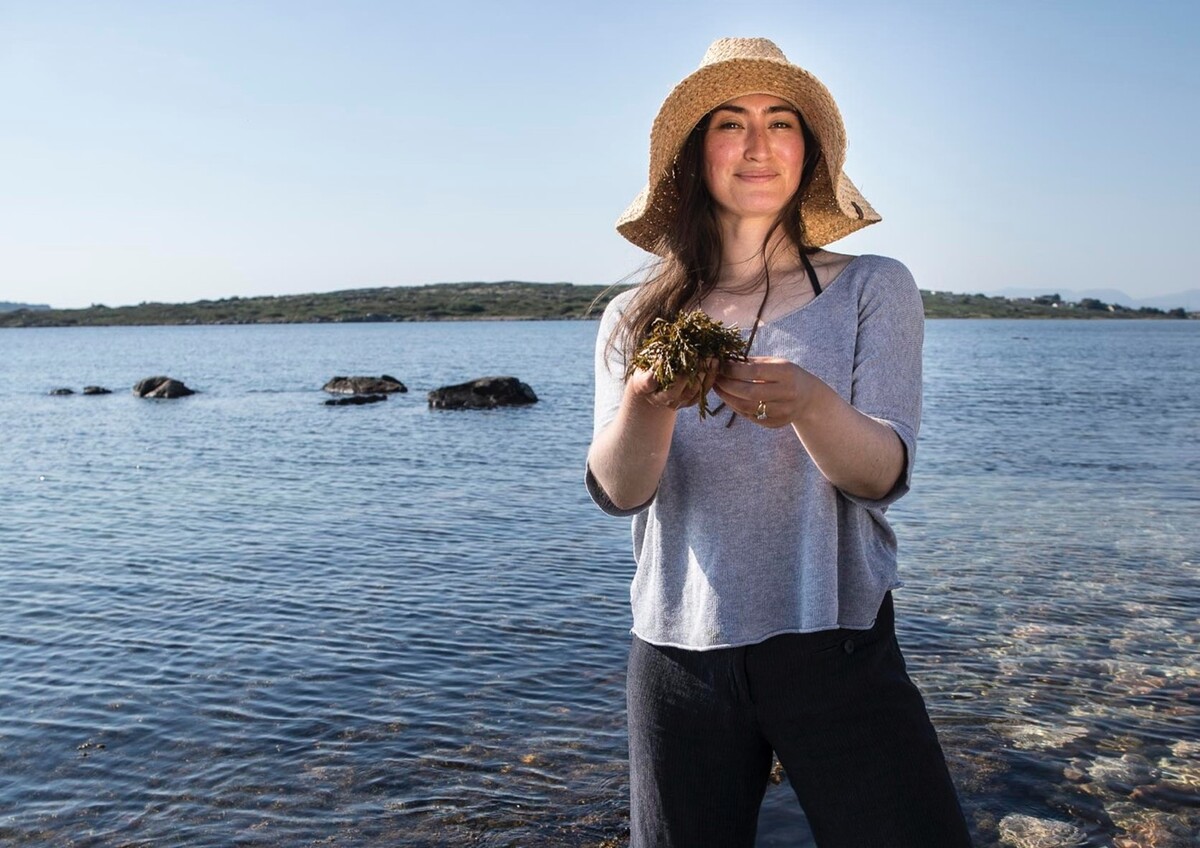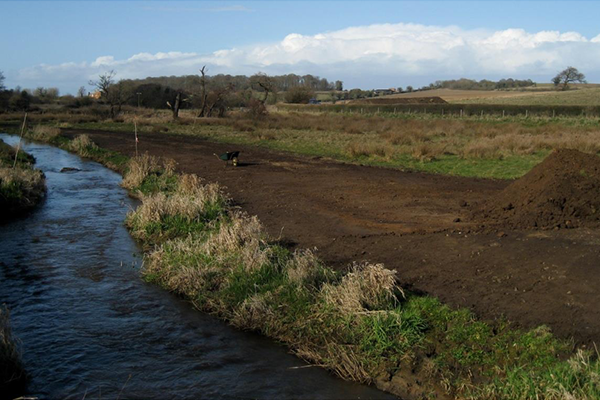
Sinead O'Brien with a handful of Irish seaweed. © Mungo Murphy’s Seaweed Co
Issue
Seaweed is not only nutritious and highly versatile, but it also absorbs CO2. While interest in seaweed is notably increasing in Europe, this ocean crop, growable offshore and on land, and with huge potential, needs more interest and awareness to flourish.
Scaling seaweed production in Europe presents technical hurdles in cultivating, processing, and integrating seaweed-based products into markets. Research and development are needed to boost the efficiency of seaweed cultivation and processing. Consumer awareness and market demand for seaweed-based products must also increase.
Solution
The European Commission has launched an action plan to increase seaweed production, emphasizing research, improved legislation, and business support. Projects like SeaMark and ASPIRE are pioneers in identifying optimal strains and improving cultivation practices to enhance yield and quality. By fostering collaboration among scientists, entrepreneurs, and policymakers, Europe aims to unlock seaweed’s potential.
Overview
While seaweed has long been an ingredient in Asian food, the West has often seen it as a nuisance. These days, Europe is flipping the script—seaweed as a nutritious, economically viable, and ecologically beneficial crop. The use of seaweed and its various strains is expanding in Europe as a food for people and animals, a healthy additive, and even for packaging and pharmaceuticals.
Innovative research and sustainable practices are harnessing seaweed’s many properties. Seaweed can please the tastebuds and create economic opportunities—and it has positive environmental benefits. Researchers and innovators in Europe are driving this movement, pursuing a share of a global market projected to reach €22 billion in 2028.
Details
Seaweed is rich in protein and omega-3 fatty acids, and it contributes to carbon sequestration without needing additives, fertilizers, or fresh water. While seaweed has been a common food ingredient in Asia for centuries, the West has overlooked its massive potential.
Now, seaweed cultivation in Europe is expanding, not only for eating but as a useful material. The European Commission aims to increase seaweed production, projecting a €9 billion market by 2030 with the potential to create 85,000 jobs. Research projects are also exploring efficient cultivation techniques and developing new seaweed-based products, such as food ingredients, feed additives, and packaging materials.
Food benefits of seaweed
Along with its unique flavor, seaweed has a high nutritional value, containing essential nutrients such as protein and omega-3 fatty acids. The European Food Safety Authority has highlighted seaweed’s status as a “superfood.”
Ólavur Gregersen, an entrepreneur in the Faroe Islands, a Danish territory, has been experimenting with seaweed-based cuisine, creating products such as seaweed butter and pesto. Gregersen’s company, Ocean Rainforest, began cultivating seaweed offshore in 2010. Meanwhile, the EU-funded SeaMark project, coordinated by Gregersen, aims to develop new seaweed-based products, ranging from food ingredients to health supplements and packaging materials. The project highlights seaweed’s great promise in Europe, not just in food for people but also in animal feed, skincare, and bio-packaging.
Cultivation efforts are focusing on efficient production and market expansion for seaweed products. Innovations in seaweed farming, such as new planting and harvesting machines, aim to reduce manual labor, lower production costs, and increase output. These advancements are supporting the expansion of seaweed cultivation across Europe, with trials taking place offshore in Norway and on land in Iceland.
Seaweed’s positive environmental impact and economic promise
Environmentally, seaweed cultivation offers several advantages. It absorbs carbon dioxide (CO2) and does not require additives, fertilizers, or fresh water. These factors help make seaweed farming a sustainable agricultural practice and, according to a 2023 United Nations report, a potential means of combating climate change.
The European Commission published an action plan in 2022 to increase seaweed production in Europe through enhanced research, improved legislation, business support, and greater social awareness. The European Union (EU), one of the world’s largest seaweed importers, wants to expand its domestic production. Meanwhile, the global market for seaweed was valued at nearly €14 billion in 2021 and is projected to reach over €22 billion by 2028.
Research projects like ASPIRE, led by algal specialist Dr. Ronan Sulpice at the University of Galway in Ireland, focus on identifying the best seaweed strains for cultivation, improving yields, and ensuring high-quality production. The goal is to select seaweed varieties that meet both producer and consumer preferences, enhancing the commercial viability of seaweed farming in Europe.

NOURISHING SEAWEED MASK by Mungo Murphy’s Seaweed Co © Mungo Murphy’s Seaweed Co
The ASPIRE project is expected to boost the local economy through aquaculture. In collaboration with Sulpice, Mungo Murphy’s Seaweed, a seaweed farm in the Connemara district of Western Ireland, is seeking opportunities to increase the popularity of seaweed-based items. The company sells not only food but also cosmetics made from seaweed-based ingredients.
With its capacity to create jobs, reduce carbon emissions, and offer a range of uses from food to packaging, seaweed represents a promising frontier in Europe’s green transition. What’s happening there may also help influence other parts of the world.
For more details on the growing use of seaweed in Europe, read the full article on Horizon magazine.
Related Information
KEYWORDS
- # Case Study
- # Coastal Areas
- # Fisheries
- # Human Health
- # Life of Citizenry and Urban Life
- # Water Environment/Water Resources
- # Adaptation Action/implementation
- # Adaptation Business
- # Adaptation Planning/Policy
- # Education/Awareness/Information
- # Locally-led Adaptation
- # Nature-based Solutions
- # Participatory Approach
- # Research/Innovation
- # Europe
- # Denmark
- # Iceland
- # Ireland
- # Norway




